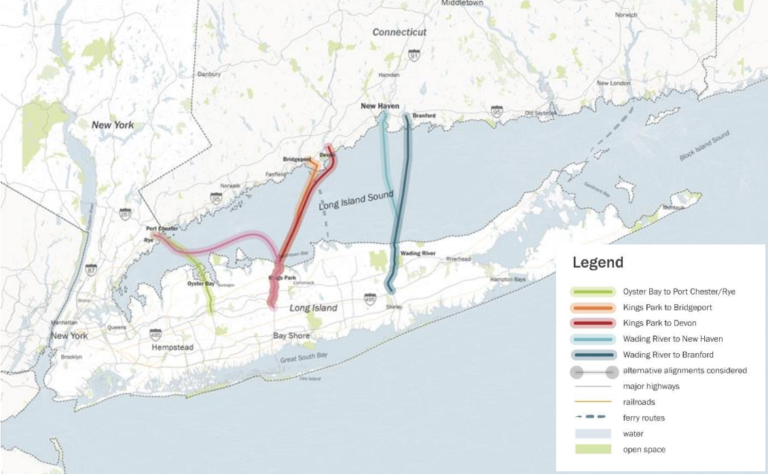
If you want to leave Long Island by train or car, you have to go through New York City. A proposed tunnel under the Long Island Sound would give automobile traffic a way around the city, and now a planner is promoting adding trains to the tunnel proposal as well.
The Regional Planning Association, a Manhattan think tank, has advocated for the inclusion of trains in any tunnel under the Sound at the behest of its president, Tom Wright.
“Our position is that an automobile-only tunnel is not smart in this day and age,” said Dani Simons, a spokeswoman for the association. “The only way we would support this is if there is a rail component.”
The tunnel would connect Long Island with Westchester County. Gov. Andrew Cuomo announced last month that the state Department of Transportation had issued a Request for Expressions of Interest. The request invited interested parties to provide input on environmental, engineering, financial and operational considerations before April 2.
That announcement followed a study conducted by Montreal consulting firm WSP that was released in December.
The study considered three possible paths for a Sound crossing: on the east end of the island, from Wading River to New Haven and Branford; in the central part of the island, from Kings Park to Bridgeport and Devon; and on the western end, from Oyster Bay to Rye/Port Chester.
Although the Oyster Bay to Rye/Port Chester is the shortest distance of the three, it is also the most expensive, with estimates ranging from $31.5 billion to $55.4 billion, and this is without an additional tunnel for trains.
The study estimated that the Oyster Bay route would have 86,400 daily riders if the toll was $20 and that the route would generate at least $520 million annually in toll revenue. It also estimated that the Oyster Bay route would have a higher percentage of freight traffic (trucks) than the other two routes combined.
According to the study, there have been eight major proposals for a Long Island Sound crossing since 1938, with the most recent being a proposal by local developer Vincent Polimeni in 2008.
The Regional Plan Association has worked for over 90 years on public works, economic development and open spaces in the New York metropolitan area. The group was most recently involved with Long Island when it backed a third track for the LIRR.
But Simone said the association believes that the state has more pressing concerns to deal with before a tunnel under the Sound should be seriously considered — namely, maintaining the tunnels that it already has.
“We think that there are major other infrastructure projects like the Gateway Tunnel [underneath the Hudson River] that are much more urgent,” she said. “Fixing the roadways and regional rail network, that’s where the focus should be.”






